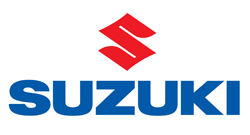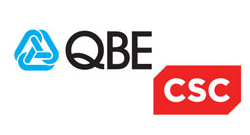5 Tips for Large File Transfers
It doesn’t matter if you’re a small organization, a small-to-medium-sized (SMB) business, or an enterprise: at some point, you’ll likely need to exchange a large file transfer with a trading partner, third-party vendor, or client. If you don’t know how to support a large file transfer or lack the tools to execute it properly, this may be a stressful event—but it doesn’t have to be. Prepare now by tracking down the tips, tricks, and solutions that make large file transfers a breeze.
We’ll help you get started. Here are five ways to simplify the transmission of large file transfers:
#1: Use a file transfer solution that guarantees the delivery of large files
If you’re using scripts, homegrown solutions, or open-source FTP tools to send and retrieve files, processing large file transfers using these solutions will fall between a headache and impossibility. Scripts, homegrown solutions, and free tools are fine for small, ad-hoc file transfers, but large file transfers generally require a solution with a little more heft and finesse to it (i.e., a solution with features that support a heavy file transfer workload).
Most secure file transfer solutions on the marketplace today support auto-resume and integrity checks for large file transfers. These features can help give you peace of mind that your file transfers won’t drop due to network connectivity—instead, they’ll pause and continue when network problems are resolved. Better yet, the file transfer process is checked every step of the way. Certain solutions will even alert you when the file transfer completes or notify you if they fail, so you aren’t caught off-guard if your trading partner doesn’t receive an expected file delivery.
#2: Set up high availability and scaling to support changing file transfer needs
If you aren’t set up for high availability or scaling in your organization, sending and retrieving large file transfers may be the push you need to start. High availability gives organizations the maximum amount of live time they can get, even in the event of a system failure or network issue. If a file transfer is processing when a system goes down, an HA environment will ensure all file transfers are rerouted to your remaining systems, thus keeping your business requirements operating at 100%.
Scaling is equally important. A scalable environment promotes load balancing. By adding several systems to a “cluster,” file transfers will be evenly distributed across your network to avoid backups or slow processing times. Scaling also supports a growing business. By using scaling and load balancing, you’re assured that large file transfers, especially for the enterprise, are high quality and delivered where they need to go successfully—no matter the volume of file transfers you send.
#3: Send large ad-hoc file transfers through email for fast, secure delivery
Let’s say you only need to send large file transfers occasionally. If so, you may not be willing to introduce entirely new processes to your environment—but never fear. There’s still a way to send large file transfers securely and quickly to your trading partners or clients, and that way is through a secure email module like GoAnywhere MFT’s Secure Mail!
A secure email module like Secure Mail would allow your employees to send ad-hoc email messages and files as secure “packages.” There’s no size or file type restriction on Secure Mail, so a large file transfer would be simple, completed in less than five minutes.
Here’s how it works: The employee uses the Secure Mail module or Outlook plug-in to draft a message. Then, files of any size can be attached, which are immediately encrypted to protect the sensitive data contained within. Once the message is sent, the recipient will get an email with a unique link to the package. This allows them to download the message and files through a secure HTTPS connection.
For the especially security-conscious, file transfers sent through Secure Mail can be password protected, given an expiration date, and/or allow a certain number of downloads before the files within are deleted.
#4: Send large internal file transfers with secure collaboration tools
For organizations that need to exchange large files securely with internal users but want to avoid the cost and lack of security controls that come with a mainstream file sharing product, there are options! Consider secure file sharing tools like GoAnywhere’s Secure Mail, Secure Folders, or GoDrive to support your internal file transfer requirements. All of these are affordable, practical, and easy to use.
GoDrive – A Great File Sharing Alternative
This Enterprise File Sync and Sharing (EFSS) solution can be used by employees and trading partners to collaborate on important projects. GoDrive supports the sharing of large files and includes useful collaboration features like revision tracking, commenting, media viewing, and more. Note: Every instance of GoAnywhere MFT comes with five free GoDrive user accounts.
The Secure Folders module gives employees access to files of any size while on-the-run. With Secure Folders, an organization can create folders within the internal network that are accessible from virtually anywhere by authorized web users. When a new file is added, it’s transferred quickly and securely between the user’s desktop and the organization’s private network via a secure HTTPS connection.
The bottom line? As long as a user has a browser and internet connection, they can add files, modify current data, and collaborate on projects—from a car, a plane, or halfway across the world!
#5: Protect and automate routine large file transfers to reduce overall admin time
When dealing with large file transfers, especially ones you need to send to a trading partner or another location on a regular basis, it may be a good idea to automate them using a file transfer workflow. A workflow can streamline your processes from beginning to end, giving you peace of mind that the files being sent or retrieved will be secured with modern encryption technologies, tracked with granular audit and activity logs, and delivered successfully to your recipient.
A solution like GoAnywhere Managed File Transfer allows administrators to send file transfers automatically on certain days or times using a built-in scheduler. A file monitor can also watch shared folders and trigger a project to run whenever a new, modified, or deleted file is detected within your targeted location. Overall, file transfer automation is proven to reduce the time admins spend on large file transfers for the enterprise, freeing up room to work on other projects that are business critical.













